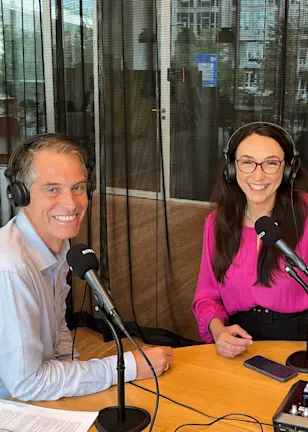Zugangsbeschränkung / Haftungsausschluss
Die auf diesen Seiten enthaltenen Informationen dienen ausschliesslich Marketingzwecken.
Der Zugang zu den Fonds ist beschränkt auf (i) qualifizierte Anleger gemäss Art. 10 Abs. 3 ff. des Bundesgesetz über kollektive Kapitalanlagen („KAG“), (ii) professionelle Kunden gemäss Art. 4 Abs. 3 und 4 des Bundesgesetz über die Finanzdienstleistungen („FIDLEG“) und (iii) professionelle Kunden gemäss Anhang II der Richtlinie über Märkte für Finanzinstrumente (2014/65/EU; „MiFID II“) mit Sitz in der Europäischen Union oder im Europäischen Wirtschaftsraum mit einer entsprechenden Lizenz zur Erbringung von Vertriebs- / Angebotshandlungen im Zusammenhang mit Finanzinstrumenten oder für (iii) solche, die hiermit aus eigener Initiative entsprechende Informationen zu spezifischen Finanzinstrumenten erfragen und als professionelle Kunden qualifizieren.
Die Fonds haben ihren Sitz in Luxemburg oder den Niederlanden. Die ACOLIN Fund Services AG, Postanschrift: Leutschenbachstrasse 50, CH-8050 Zürich, agiert als Schweizer Vertreter der Fonds. UBS Switzerland AG, Bahnhofstrasse 45, 8001 Zürich, Postanschrift: Europastrasse 2, P.O. Box, CH-8152 Opfikon, fungiert als Schweizer Zahlstelle.
Der Prospekt, die Key Investor Information Documents (KIIDs), die Satzung, die Jahres- und Halbjahresberichte der Fonds sind auf einfache Anfrage hin und kostenlos beim Schweizer Vertreter ACOLIN Fund Services AG erhältlich. Die Prospekte sind auch über die Website www.robeco.com/ch verfügbar.
Einige Fonds, über die Informationen auf dieser Website angezeigt werden, fallen möglicherweise nicht in den Geltungsbereich des KAG und müssen daher nicht über eine entsprechende Genehmigung durch die Eidgenössische Finanzmarktaufsicht FINMA verfügen.
Einige Fonds sind in Ihrem Wohnsitz- / Sitzstaat möglicherweise nicht verfügbar. Bitte überprüfen Sie den Registrierungsstatus in Ihrem jeweiligen Wohnsitz- / Sitzstaat. Um die in Ihrem Land registrierten Produkte anzuzeigen, gehen Sie bitte zur jeweiligen Länderauswahl, die auf dieser Website zu finden ist, und wählen Sie Ihr Wohnsitz- / Sitzstaat aus.
Weder Informationen noch Meinungen auf dieser Website stellen eine Aufforderung, ein Angebot oder eine Empfehlung zum Kauf, Verkauf oder einer anderweitigen Verfügung eines Finanzinstrumentes dar. Die Informationen auf dieser Webseite stellen keine Anlageberatung oder anderweitige Dienstleistung der Robeco Schweiz AG dar. Eine Investition in ein Produkt von Robeco Schweiz AG sollte erst erfolgen, nachdem die entsprechenden rechtlichen Dokumente wie Prospekt, Jahres- und Halbjahresberichte konsultiert wurden.
Durch Klicken auf "Ich stimme zu" bestätigen Sie, dass Sie resp. die von Ihnen vertretene juristische Person in eine der oben genannten Kategorien von Adressaten fallen und dass Sie die Nutzungsbedingungen für diese Website gelesen, verstanden und akzeptiert haben.
Sustainable Investing
Millennium Development Goals (MDGs)
The Millennium Development Goals (MDGs) were eight goals to improve human society launched by the United Nations in 2000. They were mainly aimed at helping the world’s poorest people, led by the starvation that was seen in many developing countries. They were succeeded by the Sustainable Developments Goals (SDGs) launched in 2015.
8 goals
The eight Millennium Development Goals were:
Eradicate extreme poverty and hunger;
Achieve universal primary education;
Promote gender equality and empower women;
Reduce child mortality;
Improve maternal health;
Combat HIV/AIDS, malaria, and other diseases;
Ensure environmental sustainability
Develop a global partnership for development.
Creating returns that benefit the world we live in
During their 15-year reign, major progress was seen as countries sought to meet the MDGs. Between 1990 and 2015, more than 1 billion people were lifted out of poverty and 1.9 billion people gained access to piped drinking water and improved sanitation. The child mortality rate was cut from 90 kids out of 1,000 live births dying before their fifth birthday in 1990 to 43 per 1,000 in 2015.
These surviving children are also more likely to go to school. Around the world, the number of unschooled children has fallen from 100 million in 2000 to an estimated 57 million in 2015. Adding to that, adult health improved; for example, new HIV infections fell by 40%: from 3.5 million cases in 2000 to 2.1 million in 2013.
Despite this progress, the UN acknowledged that major sustainable development challenges remained pervasive. So, having taught the world that setting goals is an effective way to mobilize action and accelerate progress, the MDGs were replaced by the wider ranging and more inclusive SDGs.
















